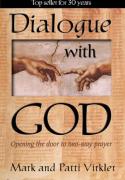 If there is one aspect of the mystery of Christ that has most profoundly affected me over this past season, it is undoubtedly the contemplation and study of the Trinity. For many years it was simply a doctrine of which I was aware (and rarely, if ever taught on), but I had missed the depth and richness of experientially knowing the triune God. In fact, I am convinced that it is not possible to know God rightly apart from the Trinity.
If there is one aspect of the mystery of Christ that has most profoundly affected me over this past season, it is undoubtedly the contemplation and study of the Trinity. For many years it was simply a doctrine of which I was aware (and rarely, if ever taught on), but I had missed the depth and richness of experientially knowing the triune God. In fact, I am convinced that it is not possible to know God rightly apart from the Trinity.
In Part Four, we looked at the doctrine of the Incarnation that expresses the mystery that Jesus Christ is fully human and fully God. This union of God and man is not merely a moral or spiritual union; it is a physical union of two natures so as to make One Person. This union is grounded in the eternal fellowship of the Father, Son and Holy Spirit––the Trinity.
The term trinity appears nowhere in the Bible, so where do we get this doctrine from? It is progressively revealed through both the Old and New Testaments, beginning in the Creation account where God says, “Let Us make man in Our image, after Our likeness.” (Gen 1:26) From the earliest days of the Church, the church fathers unanimously read this verse as being Trinitarian. In the second verse of the Bible we read, “And the Spirit of God was hovering over the face of the waters.” There are over 70 specific references to the Holy Spirit in the Old Testament. (For some of the many references to the Son in the Old Testament, see Part Three.)
The revelation of the Trinity becomes more complete in the New Testament, beginning with Jesus’ baptism where we see all three members of the Trinity functioning. God the Father is speaking from heaven; God the Son is being baptized; God the Holy Spirit is descending from heaven and resting on Jesus to anoint Him for ministry. At the end of His ministry as recorded in Matthew, Jesus tells his disciples to go to all nations “baptizing them in the name of the Father and of the Son, and of the Holy Spirit”. In this context, clearly Jesus viewed the Holy Spirit as a Person and equal with the Father and the Son.
The New Testament writers usually use the name “God” to indicate the Father and “Lord” to refer to the Son. Thus, 1 Cor 12:4-6 is clearly Trinitarian: “There are different gifts, but the same Spirit. There are different ministries, but the same Lord. And there are different activities, but the same God.” Likewise, the final verse in 2 Cor: “The grace of the Lord Jesus Christ, and the love of God, and the fellowship of the Holy Spirit be with all of you.” Other Trinitarian scriptures include Eph 4:4-6; 1 Pe 1:2; Jude 20,21.
Just as many councils gathered in the first centuries of the church to come to agreement on the nature of Jesus as fully man and fully God, likewise fathers and theologians in the church developed, from an understanding of the revelation of scripture, the doctrine of the Trinity. They knew that an understanding of the Trinity is vital because, without the Trinity––Father, Son and Holy Spirit––we do not know God rightly. The Trinity is about infinite and eternal inclusion. It is about eternal, joyful, Other-centered, self-giving love. The kenotic love demonstrated at the cross is at the core of the joy of the triune life of God; it is this creative force of love that goes out into the cosmos. It is “the triune being of God [that] is the vital oxygen of Christian life and joy.” 1 And there never was a time when God was alone, One in essence. God has always been Trinity.
Over time, as the church began to lose its focus on the Trinity, God became increasingly remote. Instead of seeing the wonder and beauty of beholding the Trinitarian life of God in its perfect fellowship, we “re-created” the essential meaning of holiness from transcendent beauty into primarily a legal term to reflect moral rightness. (Thanks to C. Baxter Kruger for this insight.) The result was a Christianity built upon obedience to a distant God who demands a high standard of performance, rather than the good news that we have been invited into the joyous communion with an infinitely joyful triune God.
Jesus declared a truth about God that shook the 1 st century religious elite. God is not first of all a Ruler or even Creator. No, Jesus told His audience that the most foundational truth about God is that He is a Father. Yes, God rules His creation, but He does so not as a Ruler-Judge, but as a Father. When we understand this in our inner being, we start to see our life and all of creation in a new way. The motivation of a father is to nurture, to encourage, to be a life-giver. To be a Father means to love. Before time began, the Father––our Father––was loving, delighting, and giving life to the Son. “Father God” is not a title, not an expression of respect. Father is a description, because fathers beget life (without this, there is no life and therefore they are not fathers). Again, the most foundational truth about God is that He is a Father––not that He is a Creator, a Ruler or even Almighty. Above all else, He is a Father. Without this understanding, the Cross is primarily about payment made for wrongdoing. With this understanding, we see that the Cross is about a Father reaching out to His children to bring them home to Him.
The Apostle John writes: "God is love. God’s love was revealed among us in this way: God sent His one and only Son into the world so that we might live through Him." (1 Jn 4:8-9) God is love. He doesn’t need to create or rule in order to be who He is: love. However, love must have an object, and that object is the eternal Son. Jesus was loved from the foundation of the world; in fact, the Father’s love for Him was at the core of His very being. (Jn 17:24; Jn 5:20). Jesus lived out of the place of perfect security and identity because He lived in the eternal triune communion with the Father, unwaveringly as the object of His love. In the Trinity, love flows both ways; in fact, I have come to see the activity of the Trinity as a continuous divine dance between Father, Son and Holy Spirit with each One giving and receiving kenotic love.
The Father’s love is not distant or theoretical. It is not only love for the Son. The Father pours love into us by the third Person of the Trinity: the Holy Spirit. As we have seen, the Son is God With Us (Emmanuel) by becoming one of us; the Holy Spirit is God With us by living among us. 2 The Holy Spirit takes Christ’s victory on the Cross and applies it to us individually. The Holy Spirit within us makes us alive to the Trinity’s joyous, eternally life giving and life exchanging activity that is always going on in all of creation. (More on this later.)
The Trinity is not an aspect of being God. The Trinity is God; this is how God is God. When this becomes revelation, our relationship with the infinitely relational, communal and triune God changes forever. Of this, I am convinced.
~ Steve
1 Michael Reeves, Delighting in the Trinity (IVP Academic, 2012)
2 Fred Sanders, The Deep Things of God (Crossway, 2010)












Add new comment